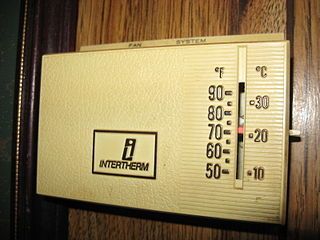From Guest Blogger Christopher Britton: Eight Things You Can Do Tomorrow To Achieve A Greener And Smarter Home

From reducing carbon footprints and slashing electricity bills, a green home is truly forming part of our future, a sustainable and a more secure one. Marrying the concepts of sustainability and security is truly what makes a smart home. Not only is it beneficial to the environment and future generations, it is also safer and more secure for families today. Below are tips for a greener and smarter home and how you can start achieving a sustainable and a safer home for your loved ones today.
Monitor home and save energy
Cost-efficiency, confidence, and convenience are the three big C’s you can achieve with smart home security. This type of home security allows you to monitor and control your home using a remote or mobile device such as a smart phone. How many times did you accidentally hit the brakes upon remembering that you forgot to switch off the air conditioning unit or the gas stove? It should come as no surprise that smart home technology is increasing in popularity. A recent survey by the HGTV Network found that about 51% of home owners would consider installing this technology. Not only is a smart home security convenient and safer, it also lowers energy costs as it allows appliances to be switched on and off. Home automation will eliminate “vampire power” costs like standby energy that accounts for anywhere between five to ten percent of annual electricity costs.
Control the thermostat
Another way to help cut down on wasted energy is by using a nifty gadget that you can program to your habits. With a smart thermostat, you will never cool or heat a room that you don’t have to cool or heat. You can even sync this with your smart phone.
The bright idea
According to the US Energy Information Administration, light bulbs account for 30% of a home’s energy consumption, unless you live in a smart home. Ever heard of smart lights? Smart lights help save energy and money while securing your home at the same time. You can set them depending on your routine or preferences. You don’t have to worry about forgetting to turn off lights because they can be programmed automatically. You can also choose to turn it on while you are away to make it look like someone’s home.
Leak alert
A minor leak can escalate into a much bigger damage in no time if left unattended. HomeAdvisor estimates that the average cost to repair water systems damage is around $2,000. One green home improvement you can do to avoid this major financial headache is by placing a moisture sensor in areas prone to leaking like under the sink, bathrooms, or laundry area. This will alert you in case water is detected where it doesn’t belong then address them immediately.
Limit the power
A smart home doesn’t give off energy more than it should. Try power adaptors that limit the energy given to a certain device so that no device will be using power more than it should. When the demand has been met, power supply automatically shuts off. There are also power strips that do the same thing. Aside from saving energy, this also lowers the risk of fires caused by overloading.
Open windows and alarms
Sustainable home living means using earth’s resources like air and sunshine (since it is incredibly hot in some parts of the world anyway) wisely. Opening up your home is not only good for your health but also on your energy consumption. Pull back the drapes once in a while and turn off the light and cooling/heating systems. This is also good for air circulation inside the home. If burglars give you paranoia, install alarm systems in your home’s entry points. You may also put metal grills if you want.
Green roof above your head
Another way to decrease your home’s environmental footprint and energy consumption is by investing on a green roof. Solar roofing utilizes battery units which you can use to actually give power to devices. Aside from solar-paneled roofing which is becoming increasingly popular, you can also use recycled materials like rubber, thermal, and steel shingles. Some even go all the way by literally turning their roofs green, filled with plants. Maintenance might be more than traditional roofing but a roof garden is pretty hard to beat.
Grow your own food
Plants and greens inside the house improve air quality. Its health benefits go from lowering risk of respiratory disorders to better well-being in general. Indoor gardening is gaining ground in many urban communities as homeowners recognize the benefits of growing their own food. It is certainly one of the green activities you can do with the whole family. Herbs and spices are a favorite. Not only are they fresh, they are also good conversation starters.
Your phone is smart. Your kids are in so many ways probably already smarter than you are. Isn’t it time for your home to be smart, too? When it comes to building a green and wired home, you got the power. It is a worthy investment and benefits are long-term. Benefits will outlast you and go beyond your family’s needs. The rewards will extend to future generations.
